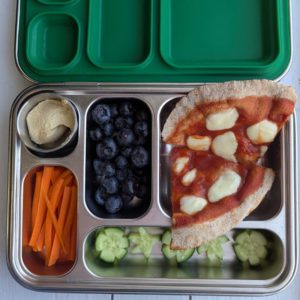 When one of my daughters was a small child she lived for a brief time on cereal, toast, and raisins, washed down with large amounts of milk. For that couple of weeks, nothing could coax her to eat anything else. Then suddenly one day she decided enough was enough and broadened her choices.
When one of my daughters was a small child she lived for a brief time on cereal, toast, and raisins, washed down with large amounts of milk. For that couple of weeks, nothing could coax her to eat anything else. Then suddenly one day she decided enough was enough and broadened her choices.
As result of raising a picky eater and after years of advising parents, I’ve found these strategies work best.
- Accept the fact that your child is a finicky eater. No threats or rewards will convince your child to try a new food that does not appeal to her.
- Encourage, but don’t force him to try new foods.
- Never insist that she empty her plate.
- Offer food when your child is hungry, not as a pacifier, reward or punishment.
- Offer milk if your child is picky. Although milk is not the only source of calories and nutrients for young children, it still serves as an important part of their daily calories, protein and mineral intake. It is a good nutrient boost when food choices are slim.
- Don’t classify foods as good or bad. All foods, even sweets and treats are fine when eaten in moderation.
- Make your child the focus of attention at meals. Don’t focus on the food she is or isn’t eating.
- Set a good example. If you don’t eat vegetables, why do you expect your child to eat them? Children learn by example. Be a good one.
- Many children are scared of trying new things. This can limit the foods they will eat. As your preschooler gets older, new things will be intriguing rather that fearful. All experiences, including food choices, will expand. The more your child is exposed to a food, even if he doesn’t eat it, the more neutral his feeling about the food will become.
- Let your child be a kitchen helper. Even young toddlers love to be part of meal preparation. Children are more likely to eat food they help prepare.
- Offer new foods along with old favorites.
- Sandwiches are good holders for something new. Try cutting them in fun shapes and remember a half sandwich is a preschool serving size.
- Don’t ask your child to try something new when she is tired or not feeling well.
- Encourage a taste bite. Put a spoonful or a piece of the new food on his plate and encourage him to try one bite. But don’t be annoyed if he won’t go near the new food. You many have to do this 5 or 6 times before his curiosity gets the better of him and he gives the new food a try. He may touch it, smell it and smash it before he ever eats it. Exploring within reason is part of learning.
- Plan dessert as part of the meal and don’t withhold it if she doesn’t eat. Fruit sauce, fresh fruit, flavored yogurt, pudding, custard and oatmeal cookies are all healthy choices and add to a meal, even with they are labeled dessert. A small child once told me, “Spinach is what you eat to get a cookie.” Not the best strategy to encourage eating vegetables.
- Preschoolers grow more slowly and are very busy little people. Don’t worry about how much your child eats as long as growth is within normal limits. Sometimes we misjudge what a child-sized portion should be. These serving sizes are big enough for a toddler or preschool child:
- Meat = 1 ounce
- Milk = 4 ounces or ½ cup
- Juice = ¼ to 1/3 cup
- Cut up fruits and veggies = ¼ cup or a half of a medium fresh fruit
- Bread = ½ slice
- Cooked cereal, rice or pasta = ¼ cup
- Dry cereal = 1/3 to ½ cup.
- And, the most important tip for raising a picky eater – smile when you eat together!© NRH Nutrition Consultants, Inc. Reprinted with permission from HealthNewsDigest.com












